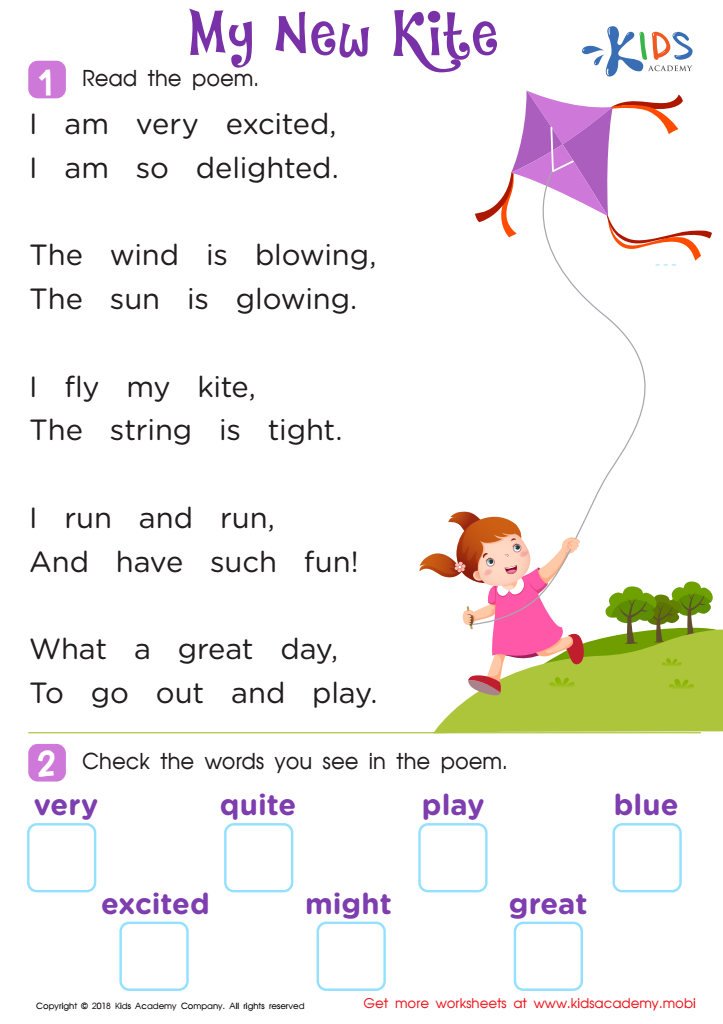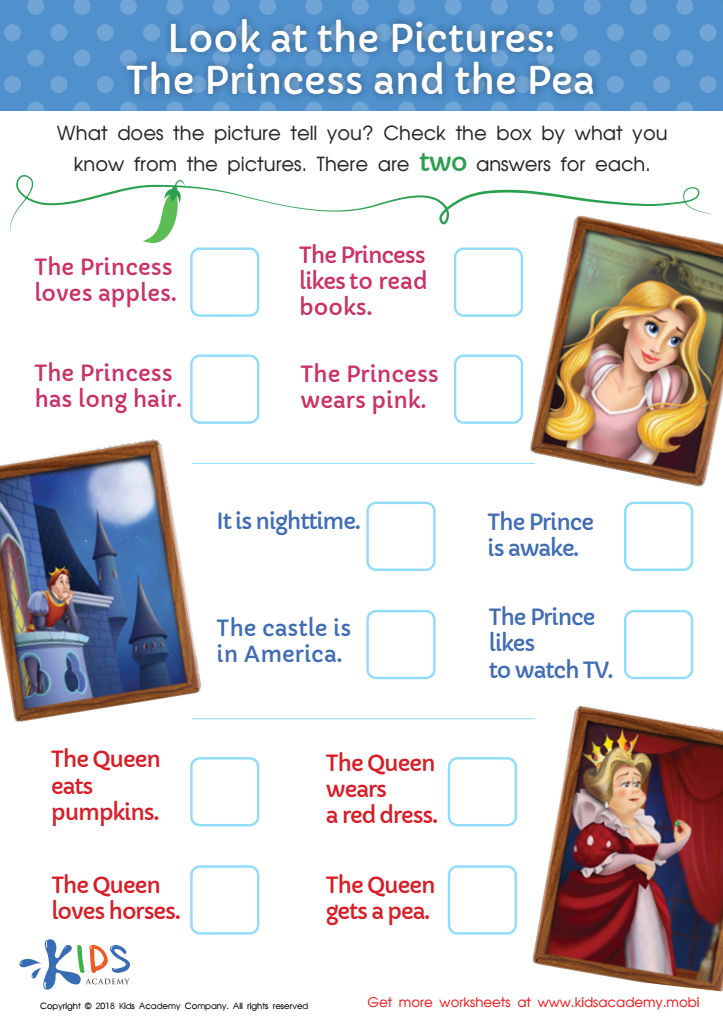Story sequencing Normal Grade 1 Reading Fiction Worksheets
6 filtered results
-
From - To
Explore our "Story Sequencing Normal Grade 1 Reading Fiction Worksheets" designed to enhance your child's reading skills! Tailored for first graders, these engaging worksheets help young learners practice the essential skill of sequencing events in stories. Through fun and interactive exercises, children will learn to identify the beginning, middle, and end of a narrative, improving their comprehension and analytical abilities. Perfect for both classroom and home use, our worksheets provide a solid foundation in reading fiction. Download now to give your child a head start on their reading journey with these thoughtful and educational resources.


Poem: My New Kite Worksheet


Sequencing: The Tortoise and the Hare Worksheet


Little Red Riding Hood Printable


Cinderella: Beginning, Middle and End Worksheet


The Boy Who Cried Wolf Worksheet


Look at the Pictures: The Princess and the Pea Worksheet
Story sequencing is a vital aspect of early literacy education, particularly in first grade when children are developing foundational reading skills. Understanding and practicing story sequencing help young learners grasp the order of events in a narrative, which is crucial for comprehensive reading and critical thinking.
For parents and teachers, emphasizing story sequencing aids in mastering essential literacy skills. It enables children to recognize the logical flow of a story, fostering improved comprehension and recall. When kids can identify what happened first, next, and last in a tale, they begin to understand the structure of storytelling, which enhances their ability to predict outcomes, draw inferences, and engage with texts more meaningfully.
Moreover, proficiency in sequencing supports other academic abilities such as writing. When students understand how stories are constructed, they can craft their own narratives with clear beginnings, middles, and ends. Teachers incorporating sequencing activities can also make learning more interactive and enjoyable, enriching the educational experience.
For parents, investing time in sequencing activities at home can reinforce what is taught in school, creating a cohesive learning environment. Whether through discussions about daily routines, reading storybooks, or playing sequencing games, parental involvement can significantly accelerate a child's literacy development. Thus, caring about story sequencing in Grade 1 fiction is key to nurturing proficient, confident readers.
 Assign to My Students
Assign to My Students













